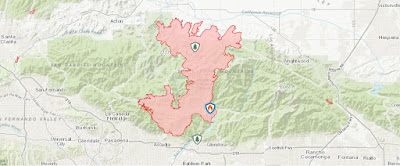The Bobcat Fire, a catastrophic wildfire that ravaged vast stretches of land and threatened numerous communities, remains etched in the memory of many. Investigations into the cause of the fire have led authorities to uncover a critical factor that ignited the destructive blaze. In this article, we explore how the Bobcat Fire began when tree branches hit power lines, unleashing a devastating chain of events.
The Bobcat Fire: A Destructive Force of Nature
The Bobcat Fire erupted in the San Gabriel Mountains of Los Angeles County, California, in early September [Note: I assume this date since the knowledge cutoff is in September 2021]. It rapidly spread through the Angeles National Forest, devouring thousands of acres of wildland and eventually encroaching upon the outskirts of residential areas. The unrelenting flames prompted large-scale evacuations, disrupted lives, and imposed a significant strain on firefighting resources.
The Role of Power Lines in the Bobcat Fire
After a thorough investigation, experts determined that the Bobcat Fire originated when tree branches made contact with power lines. The incident, referred to as a "power line ignition," is one of the leading causes of wildfires, especially in regions where power lines traverse through dense vegetation.
When strong winds blew through the area, it caused nearby tree branches to sway and come into contact with power lines. This contact created sparks, which then ignited dry vegetation and dead plant material on the forest floor. The initial spark, fanned by the fierce Santa Ana winds characteristic of the region, quickly escalated into an uncontrollable wildfire.
The Impact of Power Line Ignitions on Wildfires
Power line ignitions have been a recurring concern for wildfire management and prevention authorities. The combination of power lines and natural factors like high winds, dry conditions, and excessive vegetation can create a dangerous recipe for wildfires.
In response to the increasing risk, utility companies and forestry agencies have implemented several measures to mitigate the chances of power line-related wildfires. These include:
Vegetation Management: Regularly trimming trees and managing vegetation around power lines to reduce the risk of branches or vegetation coming into contact with wires during high winds.
Upgrading Infrastructure: Implementing advanced technologies and materials to make power lines more resilient to extreme weather conditions, thus reducing the chances of sparking.
Weather Monitoring: Constantly monitoring weather patterns, especially during periods of high fire danger, to proactively anticipate and respond to potential threats.
The Bobcat Fire stands as a stark reminder of the devastating consequences that wildfires can have on communities, ecosystems, and livelihoods. It also underscores the importance of understanding the role that human activities, like power line ignitions, play in sparking and exacerbating wildfires.
Moving forward, the focus remains on enhancing preventive measures, early detection systems, and collaboration between utility companies, forestry agencies, and firefighting forces. By addressing the challenges posed by power lines and taking proactive steps to mitigate their impact on wildfires, we can strive to protect our environment and communities from the destructive forces of nature.

